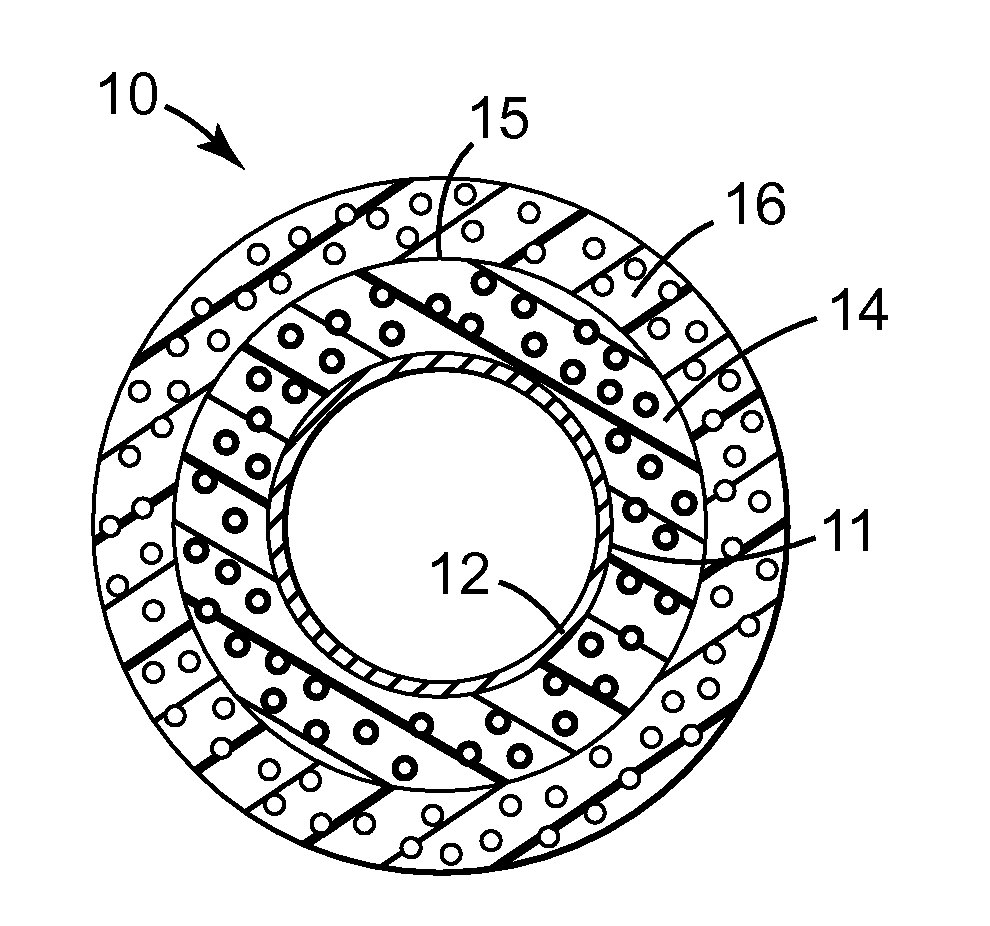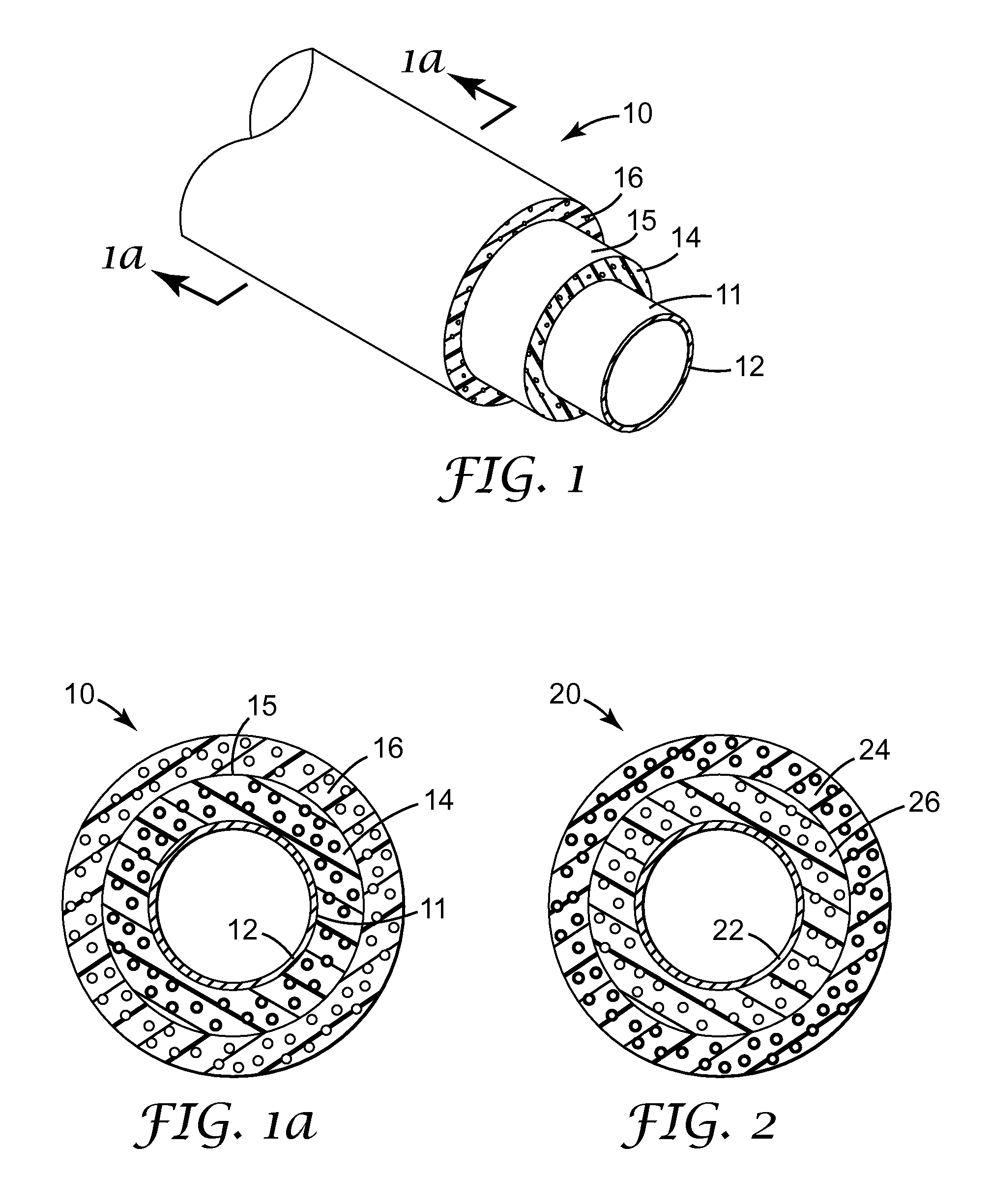Microphere-containing insulation
a technology of micropheres and insulation layers, applied in mechanical equipment, chemistry equipment and processes, transportation and packaging, etc., can solve the problems of reduced oil flow, increased heat loss from the oil present in the pipe, and unfilled polymer layers that typically exhibit higher volume shrinkage, so as to achieve less volume shrinkage and/or thermal expansion coefficient mismatch, and high volumetric heat capacity. , the effect of less volume shrinkag
- Summary
- Abstract
- Description
- Claims
- Application Information
AI Technical Summary
Benefits of technology
Problems solved by technology
Method used
Image
Examples
example
Thermal Requirements for a First Insulation Region
[0051]A composition having a volumetric heat capacity and thermal conductivity that approach or generally match that of unfilled polypropylene was desired.
[0052]A Fox50 Heat Flow Meter (obtained from LaserComp, Saugus, Mass.) was used to measure the thermal conductivity of a 12.7 mm thick sheet of unfilled polypropylene having a density of 0.923 g / cm3 (obtained from W. W. Grainger, Inc., Houston, Tex.) at a mean temperature of 37.5° C. (hot side temperature of 50° C., cold side temperature of 25° C.). The instrument was operated using polymethyl methacrylate calibration (available from Lucite International, Memphis, Tenn., under the trade designation “PERSPEX”) in accordance with the ASTM standard C518-98 “Standard Test Method for Steady-State Thermal Transmission Properties by Means of the Heat Flow Meter Apparatus,” which is incorporated herein by reference. The thermal conductivity was 0.238 W / mK on the upper plate and 0.225 W / mK ...
PUM
| Property | Measurement | Unit |
|---|---|---|
| density | aaaaa | aaaaa |
| density | aaaaa | aaaaa |
| depth | aaaaa | aaaaa |
Abstract
Description
Claims
Application Information
 Login to View More
Login to View More - R&D
- Intellectual Property
- Life Sciences
- Materials
- Tech Scout
- Unparalleled Data Quality
- Higher Quality Content
- 60% Fewer Hallucinations
Browse by: Latest US Patents, China's latest patents, Technical Efficacy Thesaurus, Application Domain, Technology Topic, Popular Technical Reports.
© 2025 PatSnap. All rights reserved.Legal|Privacy policy|Modern Slavery Act Transparency Statement|Sitemap|About US| Contact US: help@patsnap.com


